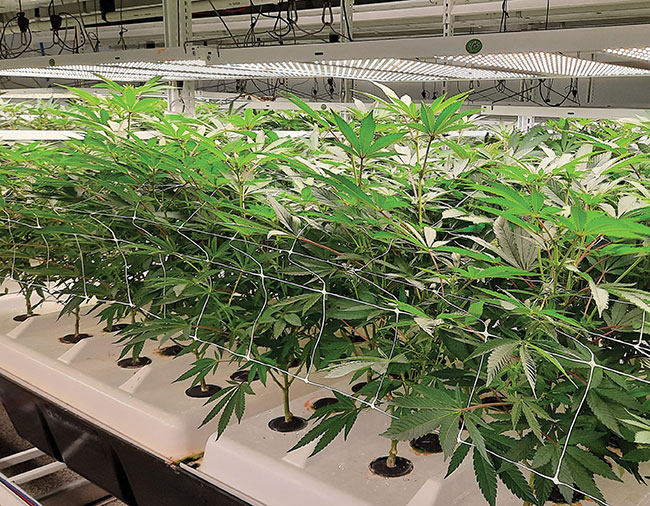
Features
Cultivation
Are you compliant with the physiological rules and regulations of cannabis plants?
Part 2: The rules of light
April 21, 2022 By Dr. Mohyuddin Mirza and Gagandeep Singh Bhatoa
 Growers are pretty good with designs and calculations to provide the range of light, but there are certain rules of the plants as well.
Growers are pretty good with designs and calculations to provide the range of light, but there are certain rules of the plants as well. All spectrum wavelengths/colours influence the morphological, physiological, and biochemical functioning of a cannabis plant. Therefore, it is wise for totally indoor cultivation to choose a spectrum which would contain all wavelengths from the UV to the far-red, while keeping in mind that well-balanced ratios achieve the best growth results.
UV light
UV light is part of electromagnetic radiation ranges from 350 to 400 nm and categorized into three different wavelength ranges (UV-A, UV-B, and UV-C).
UV-A is known to help with resins development and reduce powdery mildew in cannabis. UV-A light activates the same defensive proteins in your plants as if they were being eaten or attacked by insects, so it makes your plant more resistant to insects as a result.
Previous research studies concluded that UVB increased the floral THC concentration, CBD, and terpene production in cannabis plants.
Infrared light
The plant protein, phytochrome is sensitive to infrared wavelengths. Plants use this protein to regulate the switch from vegetative to flowering phases. A grow light that incorporates the proper amount of infrared light will result in full stem growth, proper node spacing, and higher yields
Blue light
Blue light has many similar effects as the UVA light. Blue photons, however, carry less energy compared UV. Therefore, the responses of blue can be milder than those of UV. However, blue light has been shown to increase cannabinoid concentrations, especially THC. Blue light promotes the synthesis of chlorophyll A and B boosting photosynthesis. It is also good for the shape and density of growth.
Red light
Red light promotes the synthesis of chlorophyll A and B, resulting in blooming and overall plant growth.
The far-red light is also known to affect the plant defense mechanism by down regulating some secondary metabolite pathways and thus, making the plant more susceptible to herbivores and pathogens.
In cannabis, the red to far-red (R:FR) ratio has been shown to influence the cannabis morphology. The cannabis plants grow taller if the amount of red is low compared to the far-red irradiation. This can be noticed from very early on with stem and petiole elongation. A cannabis plant which has not received enough red lights in relation to far-red is weaker and therefore, not able to carry high flower yields.
Experienced growers try to avoid elongated stem, therefore it is wise to choose a spectrum with a high R:FR ratio, which means the portion of red in relation to far red is high. As the use of supplemental lights increased so is the development of lights with spectrum closer to sunlight. Just make sure that the lights with right spectrum are being used.
Light intensity
Gone are the days when foot candles used to be a standard descriptive light unit for cannabis growth. Now you must be familiar with what is needed by the plant. Let us look at the two commonly used terms.
Photosynthetically-active radiation (PAR) is the range of light wavelengths (400 nm to 700 nm) that enables photosynthesis in plants.
There are two ways that PAR photons are measured. Photosynthetic photon flux (PPF) is a count of all the PAR photons and photosynthetic photon flux density (PPFD) at specific spot, where it is measured. There is a limit to the density of photons that plants can use. Too high a density of photons can be detrimental to plants.
It is generally accepted that a PAR between 400 and 700 micromoles/m2/second is an optimum light for cannabis.
Growers are pretty good with designs and calculations to provide the range of light, but there are certain rules of the plants as well. The light loses strength as it travels from source to endpoint (from grow light to plant). PPFD numbers decrease with increased distance from the light. Pay attention to your grow light hanging height is so important when growing cannabis.
Another important rule, daily light integral, (DLI) will be discussed in Part 3 of this series.
Mohyuddin Mirza, PhD, is an industry consultant in Edmonton, Alta. He can be reached at drmirzaconsultants@gmail.com.
Gagandeep Singh Bhatoa is a scientific writer in Regina, Sask. Email him at gaganagrico@gmail.com
Print this page